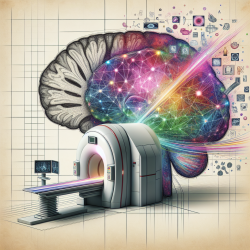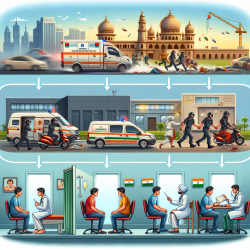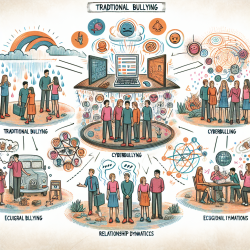Introduction
In the realm of radiation oncology, the integration of Artificial General Intelligence (AGI) is not just a possibility but a transformative reality. With the advent of large language models (LLMs) and large vision models (LVMs), AGI is poised to revolutionize the way radiation therapy is planned, delivered, and monitored. This blog explores the key insights from the research article "Artificial General Intelligence for Radiation Oncology" and how practitioners can harness these advancements to enhance patient care.
The Power of AGI in Radiation Oncology
The research highlights the potential of AGI to process extensive textual and imaging data, thereby improving the efficiency and precision of radiation therapy. By leveraging multimodal models that combine vision and language data, AGI can identify nuanced clinical patterns, facilitating a shift towards personalized, data-driven radiation therapy.
AGI's capabilities extend across various stages of radiation therapy, including:
- Initial Consultation: AGI can sift through vast amounts of clinical data to recommend appropriate treatment modalities.
- Treatment Planning: By analyzing historical data, AGI can optimize treatment plans, balancing tumor control with tissue toxicity.
- Treatment Delivery and Verification: AGI ensures dosimetric and geometric accuracy, enhancing radiation safety.
- Patient Follow-up: AGI can monitor patient outcomes, providing insights into potential side effects and recurrence.
Enhancing Clinical Decision-Making
One of the standout features of AGI is its ability to support clinical decision-making. By analyzing patient data and clinical notes, AGI can recommend the most suitable radiation modalities, reducing the time and effort required by oncologists. This not only enhances efficiency but also improves patient outcomes by minimizing human error.
Moreover, AGI's role in standardizing clinical data cannot be overstated. With the ability to process diverse clinical notes and research findings, AGI can inform best practices and highlight innovative treatment approaches, ensuring consistency across institutions.
Future Directions and Challenges
While the potential of AGI in radiation oncology is immense, its implementation is not without challenges. The integration of AGI with existing medical systems requires careful consideration of data standardization and privacy concerns. Additionally, the interpretability of AGI models is crucial for their acceptance in clinical practice.
To fully realize AGI's potential, interdisciplinary collaboration is essential. By involving radiation oncologists, medical physicists, and AI experts, we can ensure that AGI models meet the specific needs of the field, enhancing their usability and acceptance.
Conclusion
AGI holds great promise for the future of radiation oncology, offering advancements in patient consultation, treatment planning, and outcome prediction. By addressing the challenges of data standardization and interdisciplinary collaboration, we can unlock the full potential of AGI, paving the way for improved patient care and clinical automation.
To read the original research paper, please follow this link: Artificial general intelligence for radiation oncology.










